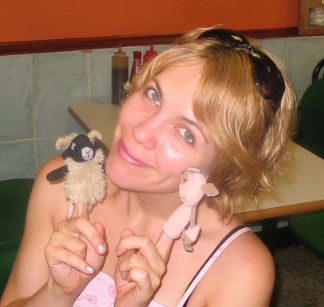Romantic Comedy Structure & Tropes: Part 1
A Comparison of Secretary and When Harry Met Sally
Throughout cinematic history, romantic comedies have been very popular with filmgoers, as demonstrated by the 53,444,481 tickets to romantic comedies sold in the USA in 2006 alone . Since the idea of love is the thing that is often cherished and sought after in society, it is no wonder we are drawn to these films that “tell us about ourselves as men and women, sexual desire, love, relationships, our longings and wishes, our fallibilities and fears. ” As the face of love is changing, so must our idea of romantic comedy. Though Steven Shainberg’s Secretary has been labelled a drama or even a black comedy, this film actually uses the basic structure and tropes attributed to romantic comedy to tell its sadomasochist love story. By comparing it to a well known romantic comedy of the 80s, When Harry Met Sally, we can see that Secretary, though dark at times, can still be considered a romantic comedy due to its structure and genre tropes.
According to Sally Potter in I Love You But…Romance, Comedy and the Movies, the basis of all romantic comedies confronts the same questions including: “What makes a good relationship? What makes us happy? What do men and women really want?” and in an article in July 2004’s Scriptwriter, she goes further to say “The essence of all romantic comedy lies in the formidable obstacles the lovers must overcome in order for their love to survive, if only for a short while. ” As an overall structure, these forms are true for both films in question but how do they hold up when dissected into genre tropes?
In most romantic comedies the viewer is faced with two protagonists who together would make an unlikely couple. Nothing more is true for both When Harry Met Sally and Secretary. In the beginning of both, it is clearly set out that the couples are unsuitable for each other. Harry is a slobby, angst-driven pessimistic as compared to Sally’s chirpy, overly-organized, eternal optimist. In the case of Secretary, Mr. Grey is Lee’s efficient, worldly employer, and she is merely his employee in her first job role. These conflicting personalities lead to personal and social obstacles between them that have to be overcome. This is key in romantic comedy as the conflict between what we want and what we need or believe is the core of most love stories. “Change is, in essence, what most of us seek in love-relationships – we want change, and love changes us.”
Read Part 2 of Romantic Comedy Structure and Tropes
Read Part 3 of Romantic Comedy Structure and Tropes
Photo by Bombardier
Throughout cinematic history, romantic comedies have been very popular with filmgoers, as demonstrated by the 53,444,481 tickets to romantic comedies sold in the USA in 2006 alone . Since the idea of love is the thing that is often cherished and sought after in society, it is no wonder we are drawn to these films that “tell us about ourselves as men and women, sexual desire, love, relationships, our longings and wishes, our fallibilities and fears. ” As the face of love is changing, so must our idea of romantic comedy. Though Steven Shainberg’s Secretary has been labelled a drama or even a black comedy, this film actually uses the basic structure and tropes attributed to romantic comedy to tell its sadomasochist love story. By comparing it to a well known romantic comedy of the 80s, When Harry Met Sally, we can see that Secretary, though dark at times, can still be considered a romantic comedy due to its structure and genre tropes.
According to Sally Potter in I Love You But…Romance, Comedy and the Movies, the basis of all romantic comedies confronts the same questions including: “What makes a good relationship? What makes us happy? What do men and women really want?” and in an article in July 2004’s Scriptwriter, she goes further to say “The essence of all romantic comedy lies in the formidable obstacles the lovers must overcome in order for their love to survive, if only for a short while. ” As an overall structure, these forms are true for both films in question but how do they hold up when dissected into genre tropes?
In most romantic comedies the viewer is faced with two protagonists who together would make an unlikely couple. Nothing more is true for both When Harry Met Sally and Secretary. In the beginning of both, it is clearly set out that the couples are unsuitable for each other. Harry is a slobby, angst-driven pessimistic as compared to Sally’s chirpy, overly-organized, eternal optimist. In the case of Secretary, Mr. Grey is Lee’s efficient, worldly employer, and she is merely his employee in her first job role. These conflicting personalities lead to personal and social obstacles between them that have to be overcome. This is key in romantic comedy as the conflict between what we want and what we need or believe is the core of most love stories. “Change is, in essence, what most of us seek in love-relationships – we want change, and love changes us.”
Read Part 2 of Romantic Comedy Structure and Tropes
Read Part 3 of Romantic Comedy Structure and Tropes
Photo by Bombardier
Labels: romantic comedy, secretary, when harry met sally



0 Comments:
Post a Comment
<< Home